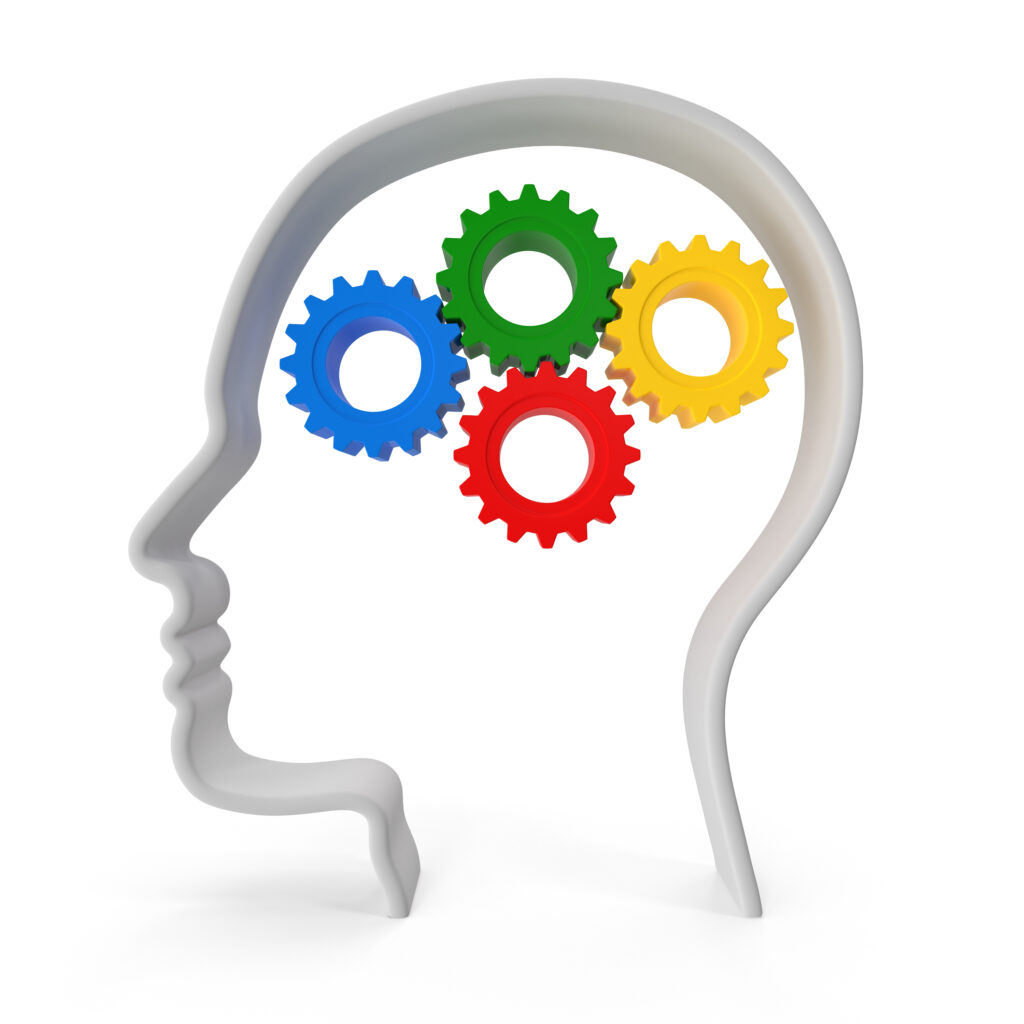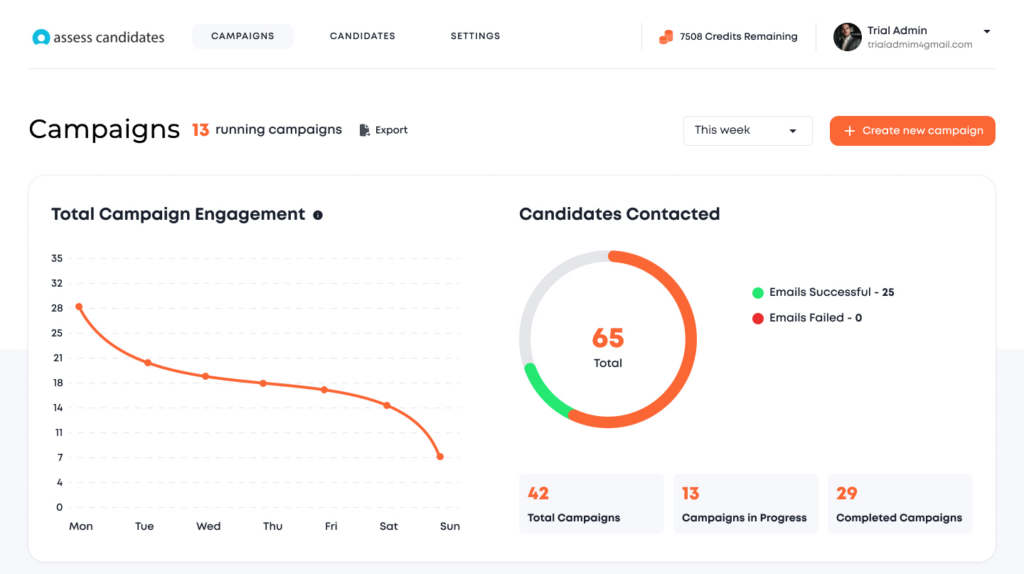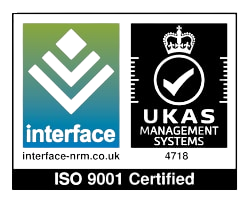How to include pre-employment assessment tools as part of your selection process
The use of assessment tools in recruitment has become a game-changer for HR professionals and recruiters – providing valuable insights into candidates’ skills, traits, and potential. In this comprehensive guide, we explore the strategic use of pre-employment assessment tests in enhancing your hiring process.
We start by explaining different types of pre-employment assessment tools and job contexts in which these should be used. Next, we cover the benefits of implementing effective hiring assessment strategies for making more informed hiring decisions. Then, we analyze the strategies and best practices for implementing these tools effectively while steering clear of common pitfalls.
As a recruiter, this article is a must read to successfully run recruitment campaigns. Let’s dive into the world of recruitment assessment tools and discover how they can transform your talent acquisition efforts.
Table of contents:
- What is the role of pre-employment assessment tools in modern recruitment?
- What are the different types of pre-employment assessment tools and when to use them?
- What are the benefits of using pre-employment assessment tools as part of your selection process?
- What are the drawbacks of using pre-employment assessment tools in recruitment?
- What are the best strategies for implementing pre-employment assessment tools?
- What to avoid when implementing pre-employment assessment tools?
- What do pre-employment assessment tools from Assess Candidates offer?
- FAQs and Glossary of Terms
1. What is the role of pre-employment assessment tools in modern recruitment?

Pre-employment assessment tools have become indispensable in modern recruitment, serving as a compass that guides organizations toward identifying the right talent efficiently, fairly, and objectively. Their role extends beyond mere candidate selection, ultimately contributing to the growth and success of the entire organization. These tools, ranging from psychometric assessments to skills testing and interview tools, offer a standardized means of evaluating candidates, ensuring that organizations select the best fit for their teams.
Why are recruitment assessments used by companies for candidate selection?
- Enhanced Efficiency: Hiring assessments streamline candidate evaluation, reducing the time and resources spent on identifying potential hires.
Understanding how to optimize the job recruitment process can shorten the hiring cycle by 60% while improving quality.
LinkedIn.
- Objective Selection: By using pre-employment assessment tests, organizations minimize biases in their hiring decisions, promoting fairness and objectivity in candidate assessments.
- Standardized Assessments: Recruitment assessment tools provide a consistent framework for evaluating candidate skills, traits, and competencies, making it easier to compare and rank applicants.
- Talent Identification: Assessment tools help pinpoint top candidates who possess the desired qualifications and attributes, ensuring a higher likelihood of hiring success.
Nearly 74% of employers say that they have hired the wrong candidate for a job.
Career Builder
- Improved Employee Retention: By selecting candidates based on their true abilities, organizations are more likely to build high-performing teams, leading to enhanced employee satisfaction, and ultimately improving organizational performance.
Organisations that use pre-employment assessment tests report a nearly 39% lower turnover rate.
Aberdeen.
Enhance your recruitment with our pre-employment assessments. Hire For Free
2. What are the different types of pre-employment assessment tools and when to use them?
Assessment tools in recruitment encompass a variety of methods, each designed for specific purposes. Understanding these types and knowing when to deploy them is essential for effective candidate evaluation.
What are the most popular recruitment assessments?
- Psychometric Assessments:
- These tools measure cognitive abilities, personality traits, and emotional intelligence. Use them when assessing a candidate’s suitability for roles requiring specific skills, such as numerical ability for finance jobs or logical thinking for roles requiring high levels of problem solving.
- Skills Testing:
- Skill-based assessments evaluate a candidate’s technical proficiencies, such as coding, data analysis, or language proficiency. Use them when technical expertise is a critical job requirement. For example, for a software developer role, utilize coding challenges or language proficiency tests.
- Behavioral Interviews:
- Behavioral interviews are conducted by asking candidates about past experiences and behaviors, these interviews assess how candidates handled real situations. They are useful for gauging a candidate’s problem-solving skills, adaptability, and teamwork abilities.
75% of businesses use behavioral interview questions to gauge soft skills.
G2.com
- Situational Judgement Tests (SJTs):
- SJTs present candidates with hypothetical scenarios and ask them to choose the best course of action. They’re ideal for roles requiring quick decision-making and problem-solving skills, such as customer service or management positions.
- Simulation Exercises:
- These tools simulate real job tasks, allowing candidates to showcase their abilities. For instance, a sales role could include a role-play exercise where candidates interact with a fictional client.
- Work Personality Assessments:
- These assess a candidate’s alignment with the company’s style of work. Use them to ensure a candidate will thrive in your organization’s work environment.
- Game-Based Assessments:
- Interactive games and simulations assess cognitive abilities, problem-solving, and decision-making skills. They are engaging and can be suitable for roles where creativity and adaptability are vital, such as marketing or design positions. Game-based assessments can also measure a candidate’s decision making skills under changing circumstances, ideal for roles which require quick judgment under pressure.
- Video Interviews
- Conducting interviews via video platforms allows you to assess a candidate’s communication skills, presentation, and professionalism. Use video interviews early in the process to narrow down candidates before in-person interviews, especially for remote or geographically diverse teams.
Choosing the right assessment tool depends on the job’s specific requirements and the skills and traits you want to evaluate in candidates. As a recruiter, you need to tailor your approach to match the role will help you make more informed hiring decisions.
3. What are the benefits of using pre-employment assessment tools as part of your selection process?
Incorporating assessment tools into your recruitment process offers a multitude of benefits that translate into tangible advantages for your organization. Here are some real-world, quantifiable examples that highlight the advantages.

6 benefits of using pre-employment assessments as part of your company’s hiring process
- Improved Hiring Accuracy: Assessment tools enhance the accuracy of candidate evaluation. This translates into fewer costly hiring mistakes and reduced turnover.
A recent study found that companies using pre-employment assessments experienced a 39% lower hiring error rate compared to those that didn’t use such tools.
Aberdeen Group
- Enhanced Employee Performance: A well-designed assessment process identifies candidates with the right skills and traits for the job. As a result, employees are more likely to excel in their roles.
- Reduced Time-to-Hire: Streamlining candidate evaluation through pre-employment assessment tests reduces time-to-hire significantly. This not only saves time but also allows companies to secure top talent faster.
According to research, organizations that use pre-employment assessments reduce their time-to-hire by an average of 22%.
SHRM
- Cost Savings: Fewer hiring errors, shorter time-to-hire, and improved employee performance all contribute to substantial cost savings.
It was reported that organizations using assessment tools achieved an average ROI of 8.7 times their investment.
The National Business Research Institute
- Mitigation of Unconscious Bias: Assessment tools provide objective, data-driven insights, reducing the influence of unconscious bias in the hiring process. This promotes diversity and inclusion, which, in turn, can positively impact innovation and employee satisfaction.
- Enhanced Employee Retention: Matching candidates to roles based on their skills and fit within the organization results in higher job satisfaction.
Recent research reveals that employees who feel engaged at work are 59% less likely to seek a new job in the next 12 months.
Gallup
In summary, the benefits of using assessment tools for recruiters are clearly both quantifiable and transformative. Assessment tools in hiring lead to more accurate hiring decisions, improved employee performance, reduced hiring costs, and a more diverse and engaged workforce, ultimately contributing to your organization’s long-term success.
Plan for long-term success with tried and tested tests. View Plans
4. What are the drawbacks of using pre-employment assessment tools in recruitment?
It’s essential for organizations like yours to focus not only on the benefits that assessment tools bring in recruitment, but to also be aware of some of the drawbacks of assessment recruitment tools. It is imperative that you implement assessment tools thoughtfully to mitigate their impact and maximize the benefits in the recruitment process.
10 potential disadvantages of assessment tools for recruitment:
- Risk of Bias: Pre-employment tests can introduce bias if not carefully designed and validated, potentially perpetuating existing biases in the hiring process.
- Cost and Resources: Developing, administering, and scoring hiring assessments can be expensive relative to the candidate pool. Consult the offer of potential vendors and make ROI calculations.
- Time-Consuming: The implementation of assessment tools can extend the hiring process, leading to delays in filling positions especially if this is a new approach for an organization.
- Complexity: Some pre-employment assessments may be complex or difficult to understand, causing frustration for candidates and requiring additional explanation or training.
- Limited Scope: Assessments may not capture the full range of skills or qualities required for a particular role, potentially missing out on valuable candidates.
- Candidate Experience: Poorly designed assessments can result in a negative candidate experience, which may harm an organization’s reputation.
- Legal Concerns: If not used appropriately, assessments can raise legal concerns related to discrimination and compliance with employment laws.
- Data Privacy: Collecting and storing candidate assessment data requires careful management to ensure compliance with data privacy regulations.
- Resistance to Change: Existing employees and hiring teams may resist the adoption of assessment tools, creating internal challenges.
- Overemphasis on Testing: Relying solely on assessments may overlook valuable intangible qualities like cultural fit, interpersonal skills, and adaptability.
5. What are the best strategies for implementing pre-employment assessment tools?
Implementing pre-employment assessment tools in any future recruitment process will require a well-thought-out strategy from your hiring team to maximize their effectiveness.

Step-by-step guide to seamlessly integrate assessment tools into your hiring process.
- Define Your Objectives.
- Identify your specific recruitment goals and the traits, skills, and qualifications you seek in candidates.
- Select the Right Assessment Tools.
- Choose assessment tools that align with your objectives. Consider psychometric tests, skills assessments, or behavioral interviews based on the role’s requirements.
- Train Your Team.
- Ensure your HR team and hiring managers are familiar with the chosen pre-employment assessment tests. Provide training to administer and interpret results effectively.
- Integrate Assessments into Job Descriptions.
- Clearly communicate to candidates that assessments are part of the application process. Update job postings and descriptions to include this information.
Did you know that 76% of job seekers want to know how long it’s going to take to fill out an application before they start?
Careerbuilder
- Consistency is Key.
- Administer hiring assessments consistently for all candidates applying for the same role. This ensures fair evaluations and accurate comparisons.
- Set Scoring Criteria.
- Define clear scoring criteria and benchmarks for assessments. Establish what constitutes a “passing” score or a strong fit for the role.
- Combine Assessments with Interviews.
- Use assessment results as a conversation starter during interviews. This allows you to delve deeper into a candidate’s strengths and weaknesses.
75% of businesses use behavioral interview questions to evaluate candidate’s soft skills.
G2.com
- Analyze Data.
- Collect and analyze data from assessments to identify trends and patterns. Use this data to refine your assessment process over time.
- Continuous Improvement.
- Continuously assess and refine your assessment strategy based on feedback, candidate performance, and evolving job requirements.
- Legal Compliance.
- Ensure that your assessment process complies with local labor laws and regulations, including those related to equal employment opportunity (EEO) and data privacy.
- Monitor Diversity and Inclusion.
- Regularly assess your pre-employment assessment tests for potential bias and ensure they promote diversity and inclusion in your hiring process.
Did you know that company diversity matters to 76% of job seekers?
Glassdoor
- Seek Feedback.
- Gather feedback from candidates about their assessment experience. Use their input to improve the candidate journey.
- Evaluate ROI.
- Assess the return on investment (ROI) of your assessment tools by measuring their impact on hiring quality, time-to-fill, and retention rates.
By following these strategic steps, you can effectively implement assessment tools in your recruitment process, making it more efficient, objective, and aligned with your organization’s goals.
6. What to avoid when implementing pre-employment assessment tools?
While integrating pre-employment assessment tools into your recruitment process can yield substantial benefits, it’s essential to avoid common pitfalls.
6 Points to avoid when using assessment tools for recruitment:
- Over-Reliance on Assessments: Don’t solely rely on assessment results to make hiring decisions. They should complement, not replace, evaluations such as in person interviews.
- Ignoring Candidate Experience: Neglecting the candidate experience can harm your employer brand. Be transparent about the assessment process and provide feedback when possible.
- Biased Assessments: Be vigilant about potential bias in your assessments, whether related to gender, race, or other factors. Regularly audit and adjust your tools to minimize bias.
- Assessing Irrelevant Skills: Don’t assess skills or traits that are not directly relevant to the job. This wastes both candidates’ and your team’s time.
- Lack of Feedback: Provide candidates with feedback on their assessments whenever possible. This helps them understand their strengths and areas for improvement and enhances their overall experience.
- Failure to Adapt: Assessments should evolve as job requirements change. Failing to adapt your assessment tools can result in hiring mismatches.
By following these best practices and avoiding common pitfalls, you can effectively harness the power of assessment tests for hiring to enhance your recruitment process and make more informed decisions.
Follow industry leaders in assessment tools. Partner with Assess Candidates today. View Plans
7. What do pre-employment assessment tools from Assess Candidates offer?
Finding the right partner for your assessment needs is crucial to ensure a seamless and effective hiring process. Here’s why partnering with Assess Candidates is the smart choice for organizations looking to optimize their candidate assessment strategies:
- Expertise and Experience: With years of experience in the field, Assess Candidates brings a wealth of expertise to the table.
- Customized Solutions: We believe that one size doesn’t fit all. Assess Candidates works closely with your organization to tailor assessment tools to your specific job roles and requirements, ensuring accurate candidate evaluation.
- Unbiased and Fair Assessments: We are committed to promoting fairness and diversity in the hiring process. Our assessments are meticulously designed and regularly audited to minimize bias and promote equal opportunities.
- Cutting-Edge Technology: We leverage the latest technology to provide state-of-the-art assessment solutions. Our platform is user-friendly, making it easy for both candidates and assessors to navigate.
- Data-Driven Insights: We believe in the power of data. Our assessments provide actionable insights that allow you to make informed decisions and continually refine your recruitment strategies.
- Enhanced Candidate Experience: We prioritize candidate experience. Our user-friendly assessments ensure a positive experience for applicants, reflecting positively on your employer brand.
- Comprehensive Support: Assess Candidates offer ongoing support to assist you in making the most of our assessment tools. Our team is readily available to address any questions or concerns.
- Proven Results: Our track record speaks for itself. Partnering with Assess Candidates has helped organizations across various industries improve their hiring quality, reduce turnover, and streamline their recruitment processes.

Practical example of how Assess Candidates can help you add pre-employment tests to your selection process
Problem
Your company wants to portray itself as a leader in the field, an innovative company that is also dedicated to ensuring diversity and inclusion. However, you feel that your recruitment process is lacking innovation and is still too manual and biased with human mistakes.
Assess Candidates Solution
We leave no room for any bias with our cutting edge technology platform. Our innovative solutions are designed to ensure the best candidate experience possible, leaving both your future top talent and hiring teams at peace. With automated processes and experienced professionals available to assist you with any concerns, we take initiative to offer tailored solutions that can be easily added. Forget manual processing of information and delays in the process, the Assess Candidates platform automatically analyzes results and presents these in an easy-to-digest format to help you make starter decisions at a fraction of the current cost.
8. FAQs and Glossary of Terms
FAQs:
- What Are the Benefits of Using Assessment Tools in Recruitment?
- Assessment tools enhance hiring accuracy, reduce time-to-hire, and lead to cost savings. They mitigate unconscious bias, promoting diversity and inclusion. Assessment tools result in improved employee performance and retention rates.
- How Do I Choose the Right Assessment Tool for a Specific Role?
- Start by defining the job requirements and the skills and traits you seek. Select assessment tools that align with these requirements, such as psychometric tests for leadership roles or skills testing for technical positions. Tailor your choice to the specific needs of the job.
- What Are Some Common Pitfalls to Avoid When Implementing Assessment Tools?
- Don’t solely rely on assessment results; use them in conjunction with interviews.
- Regularly audit and adjust assessment tools to minimize bias. Be transparent about the assessment process and provide feedback when possible.
- What are the key steps in integrating assessment tools into my recruitment process effectively?
- To successfully incorporate assessment tools, follow these steps: Define Your Objectives, Select the Right Assessment Tools, Train Your Team, Integrate Assessments into Job Descriptions, Consistency is Key, Set Scoring Criteria, Combine Assessments with Interviews, Analyze Data, Continuous Improvement, Legal Compliance, Monitor Diversity and Inclusion, Seek Feedback, and lastly Evaluate your ROI.
- How can I ensure that assessment tools contribute to a fair and inclusive recruitment process?
- To promote fairness and inclusivity when using assessment tools: Ensure that the chosen assessments do not disproportionately disadvantage certain demographic groups. Regularly review and adjust assessment tools to minimize bias. Clearly communicate the purpose and process of assessments to candidates. Explain how assessment data will be used and assure candidates that their privacy will be protected. Comply with data privacy regulations and secure assessment data to protect candidates’ personal information.
- How can I measure the effectiveness of assessment tools in my recruitment process?
- Evaluating the effectiveness of assessment tools involves ongoing assessment and improvement. Monitor key recruitment metrics, such as time-to-hire, quality of hires, and retention rates, before and after implementing assessment tools. Collect feedback from hiring managers, candidates, and recruiters to gauge satisfaction with the assessment process. Regularly review assessment results to identify and mitigate potential bias.
Glossary of Terms:
- Psychometric Assessments: Tests that measure cognitive abilities, personality traits, and emotional intelligence, providing data for candidate evaluation.
- Bias Mitigation: The process of identifying and reducing unconscious bias in assessments to ensure a fair and inclusive evaluation of candidates.
- ROI (Return on Investment): A measure of the value gained from using assessment tools, typically calculated based on factors like hiring quality, time-to-fill, and retention rates.
